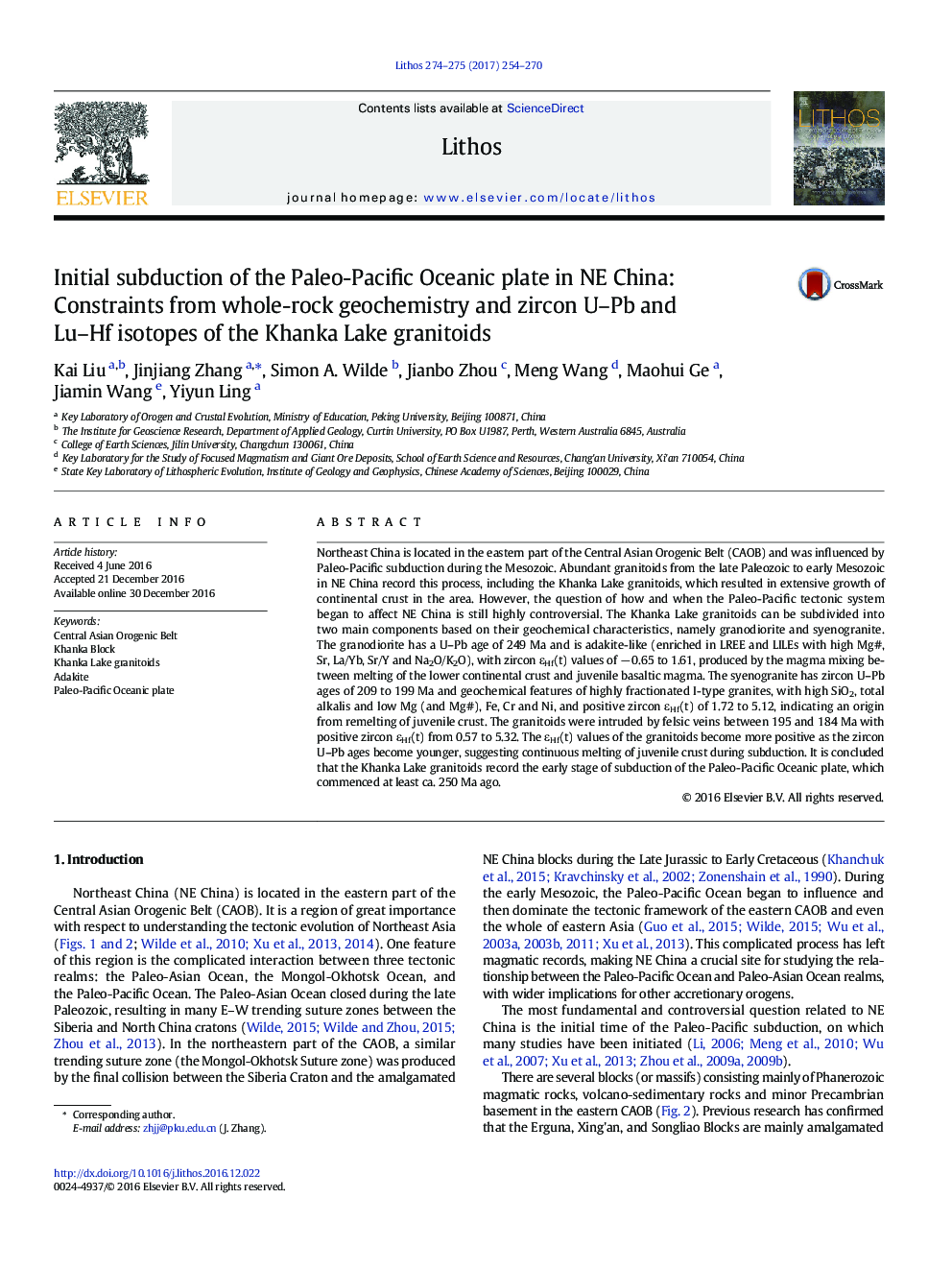| کد مقاله | کد نشریه | سال انتشار | مقاله انگلیسی | نسخه تمام متن |
|---|---|---|---|---|
| 5784282 | 1638635 | 2017 | 17 صفحه PDF | دانلود رایگان |

- The adakitic granodiorite of ca. 249 Ma was produced by the magma mixing
- The syenogranite of 209-199 Ma in age are highly-fractionated I-type granite.
- The veins dated in 184-195 Ma represent the latest magmatism.
- The Khanka Lake granitoids are generated under the Paleo-Pacific Ocean realm.
Northeast China is located in the eastern part of the Central Asian Orogenic Belt (CAOB) and was influenced by Paleo-Pacific subduction during the Mesozoic. Abundant granitoids from the late Paleozoic to early Mesozoic in NE China record this process, including the Khanka Lake granitoids, which resulted in extensive growth of continental crust in the area. However, the question of how and when the Paleo-Pacific tectonic system began to affect NE China is still highly controversial. The Khanka Lake granitoids can be subdivided into two main components based on their geochemical characteristics, namely granodiorite and syenogranite. The granodiorite has a U-Pb age of 249 Ma and is adakite-like (enriched in LREE and LILEs with high Mg#, Sr, La/Yb, Sr/Y and Na2O/K2O), with zircon εHf(t) values of â 0.65 to 1.61, produced by the magma mixing between melting of the lower continental crust and juvenile basaltic magma. The syenogranite has zircon U-Pb ages of 209 to 199 Ma and geochemical features of highly fractionated I-type granites, with high SiO2, total alkalis and low Mg (and Mg#), Fe, Cr and Ni, and positive zircon εHf(t) of 1.72 to 5.12, indicating an origin from remelting of juvenile crust. The granitoids were intruded by felsic veins between 195 and 184 Ma with positive zircon εHf(t) from 0.57 to 5.32. The εHf(t) values of the granitoids become more positive as the zircon U-Pb ages become younger, suggesting continuous melting of juvenile crust during subduction. It is concluded that the Khanka Lake granitoids record the early stage of subduction of the Paleo-Pacific Oceanic plate, which commenced at least ca. 250 Ma ago.
Journal: Lithos - Volumes 274â275, March 2017, Pages 254-270